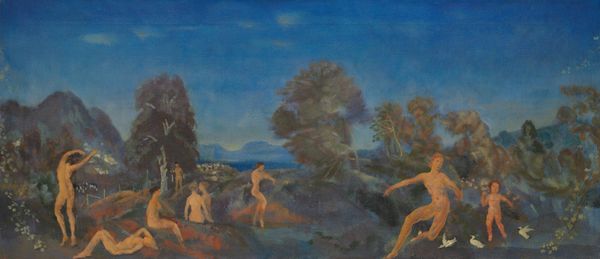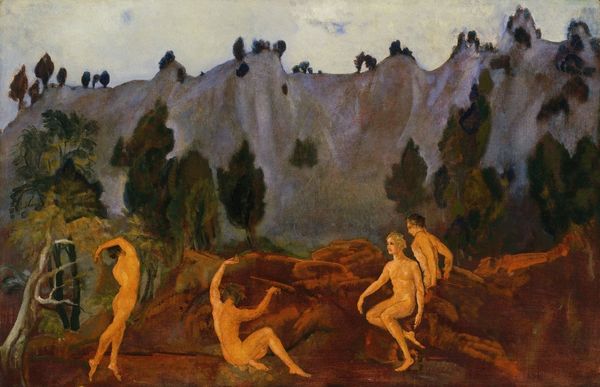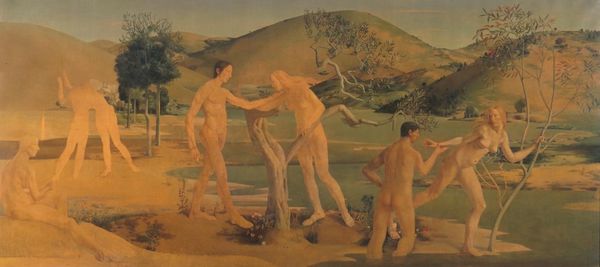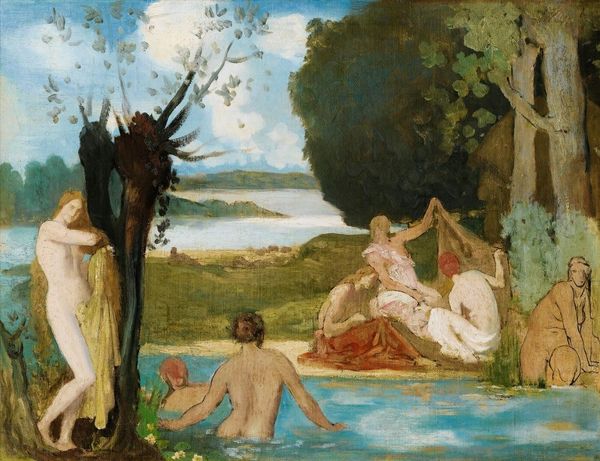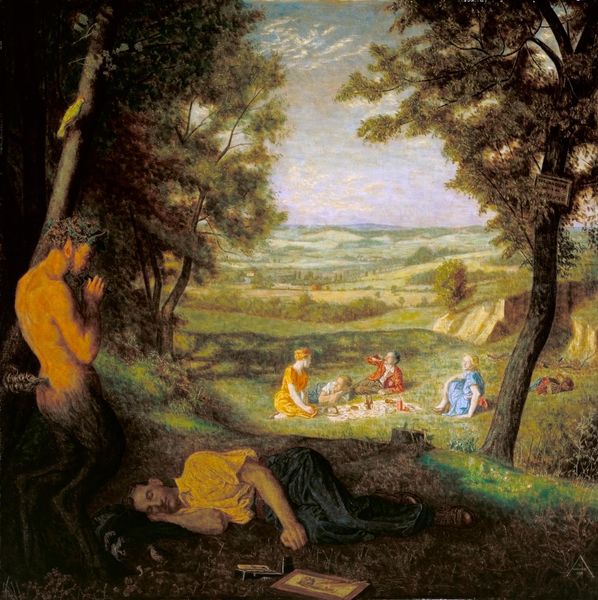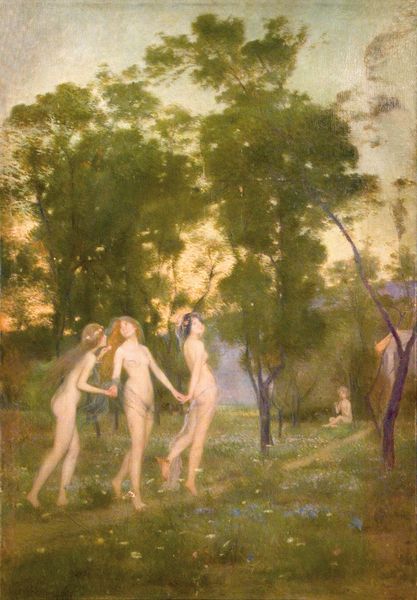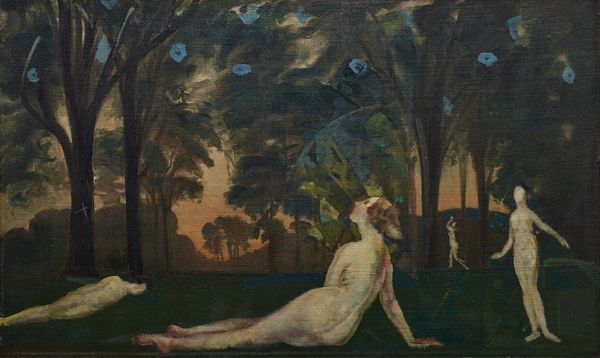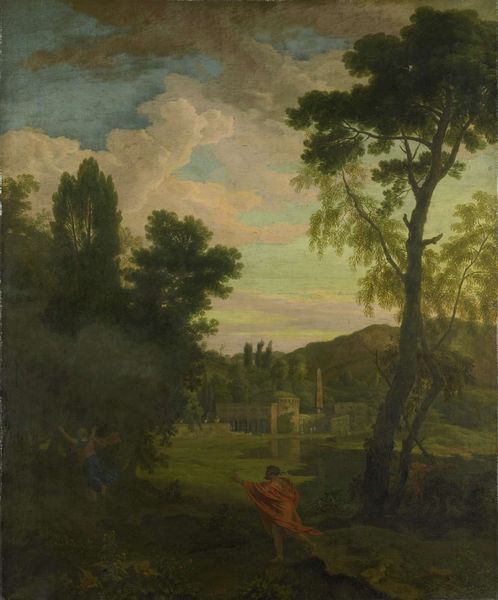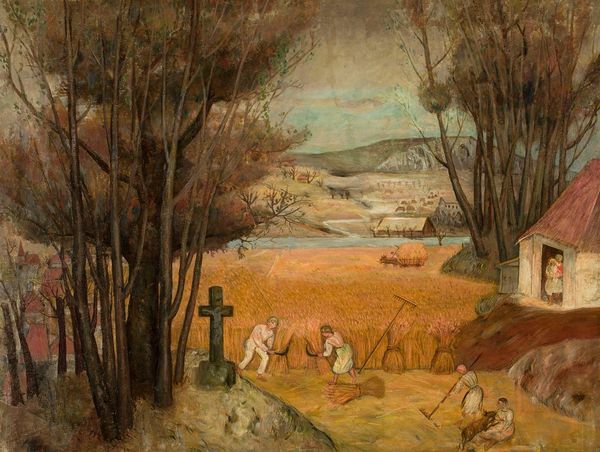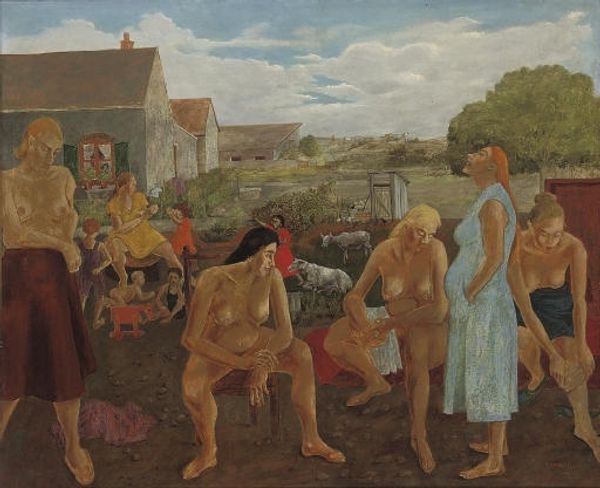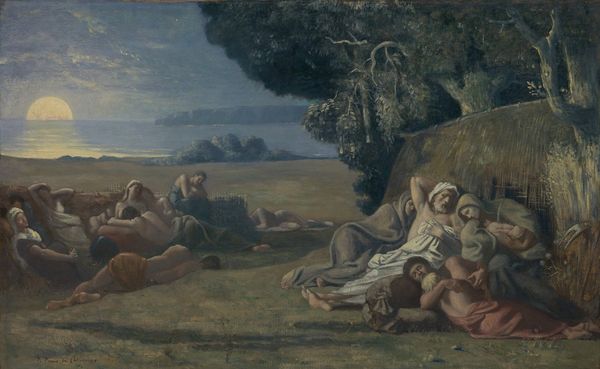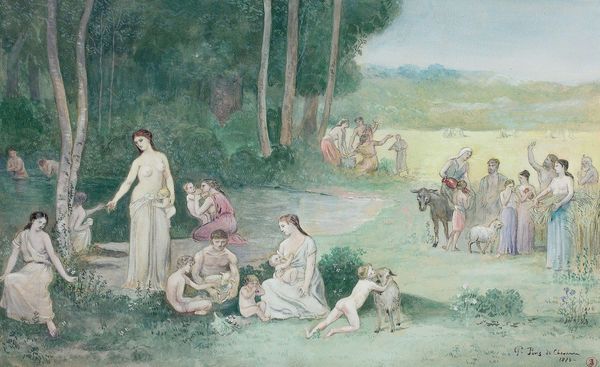
plein-air, oil-paint
#
figurative
#
plein-air
#
oil-paint
#
landscape
#
figuration
#
oil painting
#
romanticism
#
genre-painting
#
nude
Copyright: Public Domain: Artvee
Curator: At first glance, this artwork exudes a classical tranquility. The soft palette creates an immediate sense of calm and invites closer contemplation. Editor: Indeed. And this is "Midsummer Evening", believed to be an oil painting on canvas by Arthur Bowen Davies. It appears to be from his romanticist period. The medium employed, oil paint, contributes to the atmospheric quality. Curator: Absolutely, I find the figuration incredibly compelling; the idealized bodies seem to echo ancient Greek or Roman sculpture. The overall feeling suggests a pastoral Arcadia, a utopian space outside the everyday. Their very presence speaks of a continuity, the nude form resonating across eras of artistic expression. Editor: Yet, how does Davies situate these figures within the context of American art at the time? His style stands apart from the social realism gaining momentum in the early 20th century. Instead, he evokes a deliberately timeless landscape. The politics of escaping into idyllic scenes, as Davies does, is that the choice itself becomes a statement, a refusal of engagement with the industrial transformations reshaping the American experience. Curator: Fascinating. To me, the landscape itself bears significance. Its vastness diminishes the figures, suggesting humanity’s small part in the grand scheme. It mirrors the inner world as much as the exterior world—a stage for introspection and universal feelings, as evoked across countless prior eras in art. Editor: Do you think Davies strategically distances his artwork from prevailing social concerns? Given that the role of public art was being strongly debated, choosing an idealized rather than realist path would remove this piece from social controversy. Curator: Perhaps, but he could also have sought to reveal timeless emotions and narratives embedded in humanity’s collective memory. I think his focus rested more on enduring myths. Editor: It is a beguiling artwork and a valuable window onto Davies' priorities, situated where it is within broader historical developments. Curator: Agreed. This midsummer scene invites one to consider what symbols and archetypes still shape our sense of beauty and belonging.
Comments
No comments
Be the first to comment and join the conversation on the ultimate creative platform.
